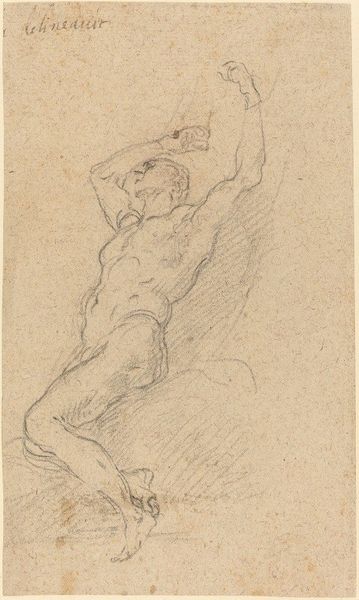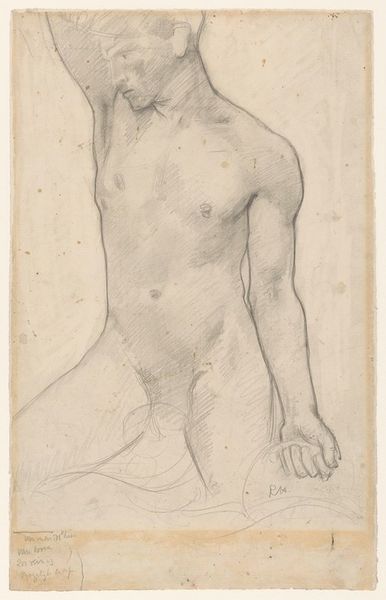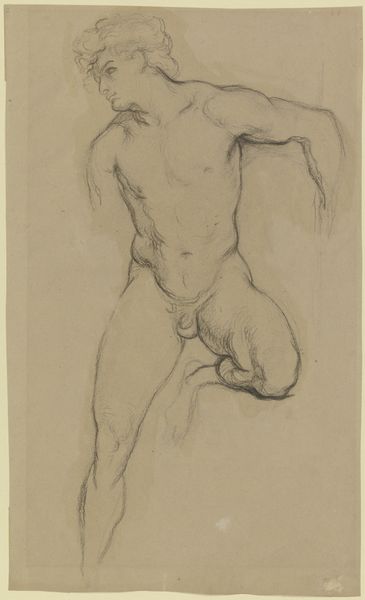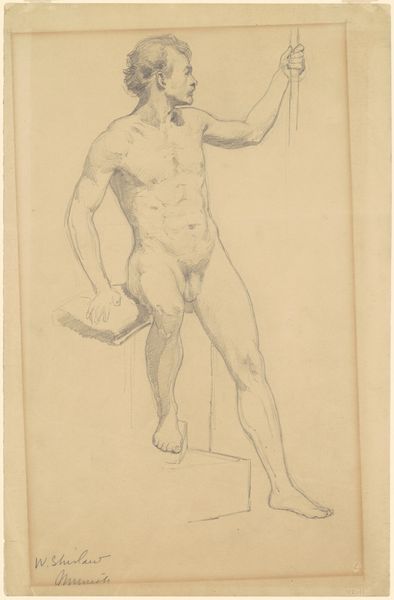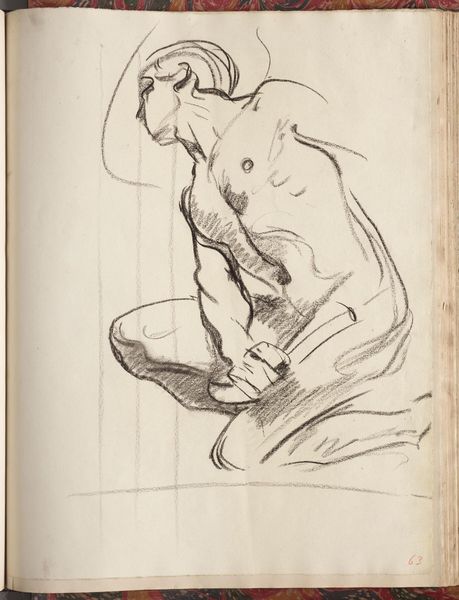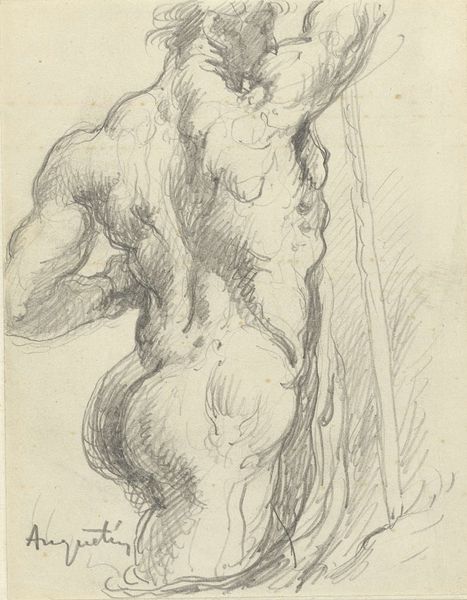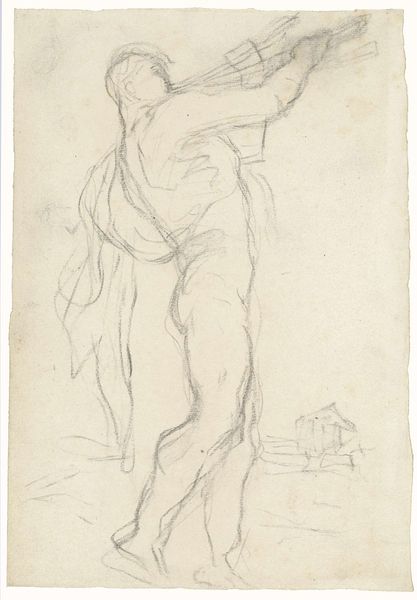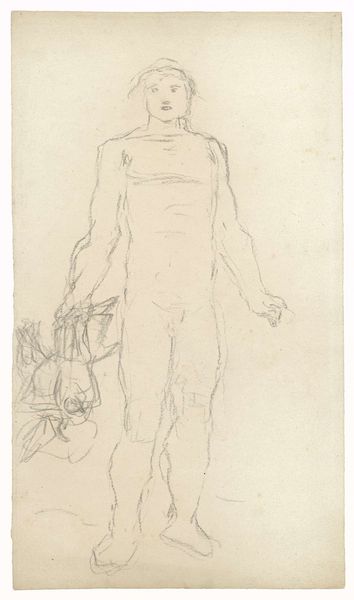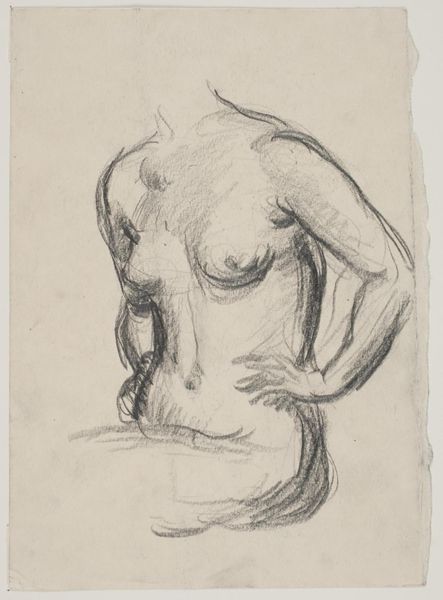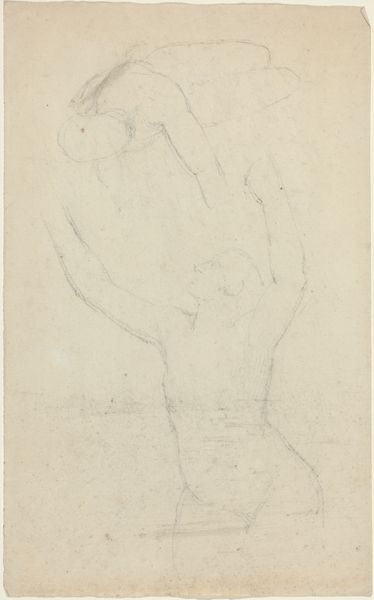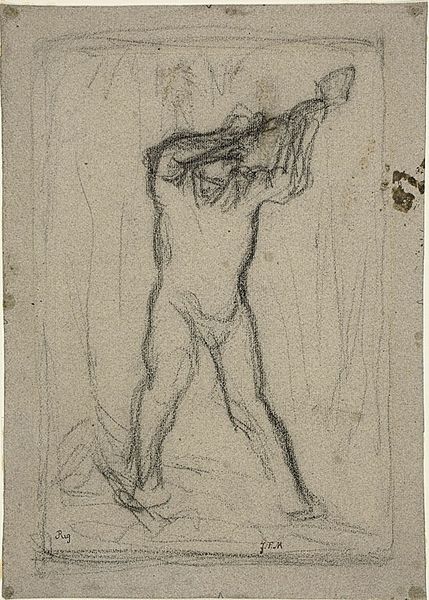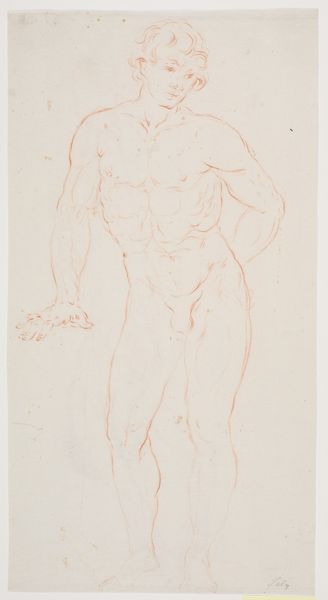
#
imaginative character sketch
#
toned paper
#
light pencil work
#
pencil sketch
#
cartoon sketch
#
personal sketchbook
#
ink drawing experimentation
#
pen-ink sketch
#
sketchbook drawing
#
sketchbook art
Dimensions: height 225 mm, width 138 mm
Copyright: Rijks Museum: Open Domain
This drawing of two putti was made by Dionys van Nijmegen, who lived in the 18th century. As an artist living in the Dutch Republic during this period, Nijmegen would have been working in a society shaped by the Enlightenment, where art was increasingly seen as a tool for moral and intellectual improvement. Rendered in pencil, the sketch depicts two winged cherubs, figures frequently employed in classical and religious art to symbolize innocence, beauty, and divine love. But looking closely, we might ask, what does it mean to depict idealized forms of children? Are they mere symbols, or do they reflect societal attitudes toward childhood, innocence, and perhaps even the suppression of youthful autonomy? Nijmegen's choice of subject matter connects to a long tradition, but it also invites us to consider how these images were used to reinforce certain cultural values. What emotional responses do these figures evoke and how do they play into historical and contemporary representations of childhood?
Comments
No comments
Be the first to comment and join the conversation on the ultimate creative platform.
